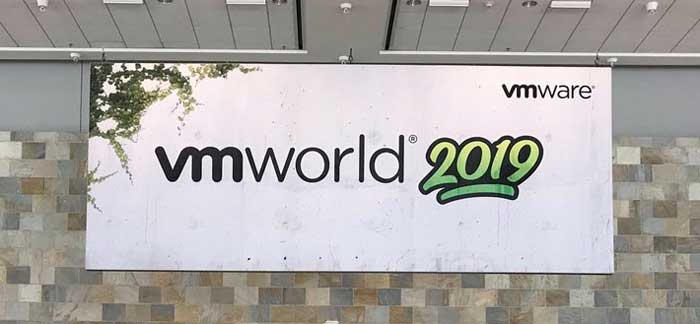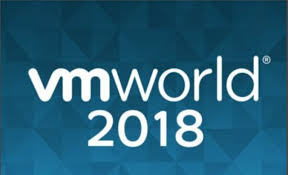
It’s has been almost two weeks since VMworld 2019 US. And I have to say, what a week!
In my opinion, this VMworld was great! Not only because of all the new exciting announcements, but certainly also because of all the people I’ve spoken to: old friend, made new friend, and of course a lot of vendors on the Solution Exchange.
Let me recap the most important thing, that struck me.
VMware goes all-in on containers
I think the message was very clear. VMware is moving away from virtual machines to containers.
Of course, this is not a 1 day job. But the path is made clear.
I expect that the version after VMware 7 (7.5?) will have native container support. VMware will use Kubernetes (k8s) for automation and management of containers. This is called: Project Pacific
For this, VMware has to adjust the ESXi code, to embed container technology.
CEO Pat Gelsinger:
“With project Pacific, we’re bringing the largest infrastructure community, the largest set of operators, the largest set of customers directly to the Kubernetes. We will be the leading enabler of Kubernetes”
You can find more in depth information about Project Pasific on Frank Denneman blog.
Personally I’m very excited about this announcement. Although I believe that Virtual Machines have the same status as legacy applications (we will never get rid of them :), containers are being used more and more in the enterprise market.
There is a lot of buzz in the container world. Kubernetes has been the defacto standard for containers for many years. There is no question about that! Other enterprise companies also added there value to the Kubernetes product, like Red Hat with Openshift and VMware with VMware Enterprise PKS. Isn’t VMware late to the party?
Although I believe that running containers on top of a hypervisor has his benefits, I’m also convinced that a lot of containers will run on bare metal. So the question is: How will VMware integrated k8s in there kernel and how will the manage bare metal container workers? Red Hat Openshift is able to do this already.
One thing is certain, VMware has the knowledge to make this a awesome product!
VMworld world is around the corner, just 1 week left until all the fun kicks off.
This year, I’m honored to get a blogger pass for the best tech event in the world!
VMworld is a very deverise event, which is fundamental for my role als a VMware architect.
Breakout sessions
Many bloggers have published there top X breakout session list. So here is my top 5:
Continue Reading »In my current role as a VMware architect, I architected a greenfield VMware vSphere 6.5 environment.
The ‘old’ environment, who I architected 4 year ago, is VMware vSphere 5.5. As the old environment was never updated, the time and risk of upgrading this environment was too high. That’s why, we decided to go for a greenfield installation.
As the new environment was accepted by the customer system administrators, we had to migrate 700 virtual machines to the new environment.
The old environment was using NFS datastores, as the new environment is using hyperconverged.
As the old environment was vSphere 5.5 U1, we weren’t able to vMotion virtual machines to the new cluster, using Cross vCenter vMotion.
To make the migration as painless as possible, I create a PowerCLI script to do the hard work for us.
While working at a customer’s site, I notice that a system administrator wanted to reboot a vSAN node. The time it took to shutdown the node was too long (30+ min) for the system administrator, so he used iDRAC to hard reset the host.
I asked him, why he just didn’t wait until the host was completely shut down?
He answered, that according to him, this didn’t matter, because ESXi was installed on a SD card. Before he hard reset the host, he makes sure the host is in maintenance mode, so no virtual machine is running on that host and vSAN data is guaranteed.
The system administrator noted that this SD card is only used during boot time.
After ESXi has booted, you can pull out the SD card and ESXi will continue to operate as normal. So in his opinion, he could easily hard reset ESXi, as long he ensured that no virtual machines a running on that host.
This statement is partially true, but before I dive into this statement, first a little background information.
[expand title=”Read more…”]
During ESXi boot, a RAMdisk is created. This RAMdisk is among other things used to store the VMkernel, modules and the scratch partition. The scratch partition is used for storing log files.
To ensure that log files are available after a reboot, during shutdown, these log files are copied to persistent storage (in this case a SD-card). During boot, the same log files are copied from persistent storage (SD-card) to the scratch partition on the RAMdisk.
So, the statement that the SD card isn’t used after the VMkernel is up and running is not completely true. During a shutdown of ESXi, the SD card is also used!
In this case, the customer was using VMware vSAN. vSAN generates vSAN trace log files that are stored on in the scratch partition.
Although the size of the log files is limited to 180 MB by default. For most SD cards, this can take up to 30 minutes to be copied.
As you can see in the screenshot below, vmhba32 is 100% used but is only copying data by 0.02 MB per Sec with an average latency of 66.25 ms.
So, what are your options to avoid long start-up of shutdown times?
1. Limit the size of your vSAN trace files. Do mind, in case of troubleshooting, you can miss some important information!
2. Store your log files on a syslog server or a central VMFS datastore.
3. Don’t use SD card for ESXi using VMware vSAN. A SATADOM is not that expensive and much faster than a SD card. Of course, you can also use a local (SSD) disk.
Final note: When shutting down your VMware vSAN node, take your time![/expand]

VMworld Europe is just a few day away, and I’m looking forward to a week of fun stuff!
One of the main reason why I go to VMworld, is to meet new people. I love a good (tech) conversation. It inspires me, in my day to day work. Not only as a IT person, but also as a private person. So, if you want to meetup, this is where you can find me.
